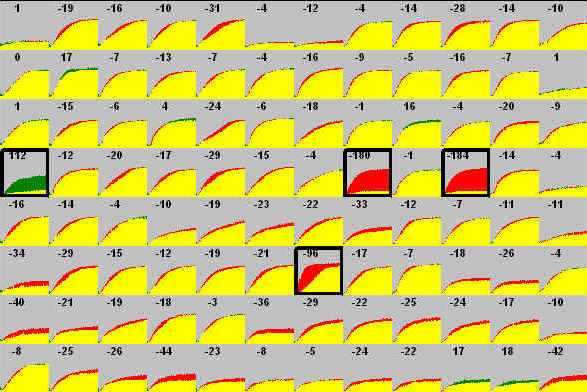Libraries
라이브러리
발표문헌
제품이 사용된 발표 문헌이 정리되어 있습니다. home
home- > 라이브러리 >
- 발표문헌
|
[PM] Cross-validation of Genomic Predictions, Metabolic Networks, and Phenotype MicroArrays
인성크로마텍(주)
|
| Date : 2020.01.08 |
| 분류 : Bio & Medical Products > Biolog |
Cross-validation of Genomic Predictions, Metabolic Networks, and Phenotype MicroArrays Several publications over the last three years illustrate how Biolog’s Phenotype MicroArray (PM) technology and metabolic
network models have been favorably compared in several organisms including Salmonella, E. coli, P. putida, P. aeruginosa,
B. subtilis, and B. cereus. In most cases, PM technology agreed with metabolic model predictions. In several cases,
Biolog PM data resulted in model expansion. These improved models provide an excellent basis for future functional
genomics and metabolic engineering investigations in these and other microorganisms.
Genome scale reconstruction of a Salmonella metabolic model: comparison of similarity and differences with a commensal Escherichia coli strain. The authors sought to identify metabolic differences, which enable Salmonella to adapt to its ecological niche through metabolic modeling of Salmonella and E. coli. The Salmonella model simulated growth predictions on different carbon, nitrogen, phosphorus, and sulfur conditions, and agreed well with PM testing. Most of the discrepancies were assigned to gene differences or similar explanations. Differences in carbon utilization will be studied to understand how Salmonella adapts to its niche. Differences in ability to utilize histidine among Salmonella strains correlated with a mutation in a gene involved in histidine metabolism and other similar examples were identified. The abstract can be viewed here
Genome-scale reconstruction and analysis of the Pseudomonas putida KT2440 metabolic network
facilitates applications in biotechnology.
A metabolic network model was validated with several methods including Biolog PM analysis. 47 positive PM carbon source
utilization tests were compared to flux balance analysis. Good agreement between in silico growth models and PM test results
indicated proper reconstruction of core metabolism. Biolog PM technology additionally identified positive PM test results for
carbon sources that do not support in silico growth providing further ability to validate metabolic reactions,
which are not required for in silico growth.
Download a copy of the paper here
Genome-scale metabolic network analysis of the opportunistic pathogen Pseudomonas aeruginosa PAO1.
Comparison of carbon source utilization test to the metabolic network model revealed that some carbon sources present in
the model had no transporters. Some positive Biolog carbon source tests were not present in the model and provided
immediate opportunity for model expansion. The authors found a 90% match in 30 carbon sources indicating sufficient
pathway reconstruction and sufficient Biolog plate content to represent diverse carbon catabolism.
Download a copy of the paper here
Genome-scale reconstruction of metabolic network in Bacillus subtilis based on
high-throughput phenotyping and gene essentiality data.
The authors found that their B. subtilis in silico model predicted PM test results in 141 of 271 cases. Comparison to Biolog
data resulted in addition of 75 reactions to the metabolic reconstruction and 200 of 271 cases correctly predicted.
Biolog PM data played an important role in iterative model development. Using a combination of substrate utilization data
and network gap analysis, the network was expanded by 8%.
The abstract can be viewed here
A genome-scale metabolic reconstruction for Escherichia coli K-12 MG1655 that accounts for
1260 ORFs andthermodynamic information.
The E. coli metabolic network was converted into an in silico model of metabolism. Comparison of computational results
to Biolog PM data showed 76% agreement. The authors analyzed false positive and false negative results and
proposed methods for resolution.
A copy of the paper can be downloaded here
Metabolic capacity of Bacillus cereus strains ATCC 14579 and ATCC 10987 interlinked with comparative genomics.
Strain specific ORF’s were identified by comparative genomics and compared to phenotypic differences to identify potential indicators of performance of these bacteria in different ecological niches. Genomic predictions of carbon and nitrogen metabolism were confirmed through the use of Phenotype MicroArrays. A copy of the abstract can be viewed here
Phenotype MicroArray Technology Biolog’s Phentoype MicroArray technology enables researchers to evaluate nearly 2000 phenotypes of a microbial cell in a single experiment. This integrated system of cellular assays, instrumentation and bioinformatics software provides cellular knowledge that complements molecular information, helping you interpret and find the relevant aspects in massive amounts of gene expression or proteomics data. Through comprehensive and precise quantitation of phenotypes, researchers are able to obtain an unbiased perspective of the effect on cells of genetic differences, environmental change, exposure to chemicals or drugs, and more.
[ 출처: www.biolog.com ]
|

